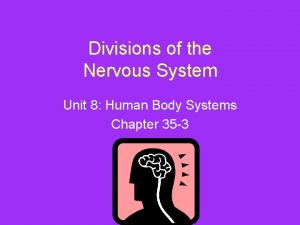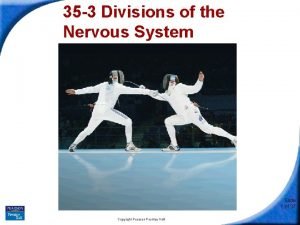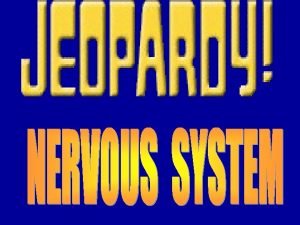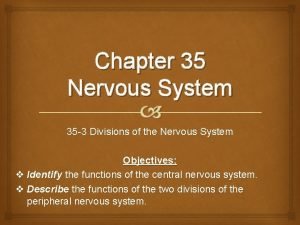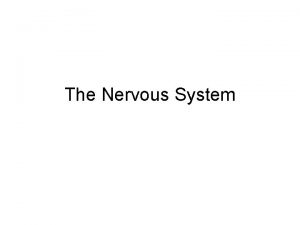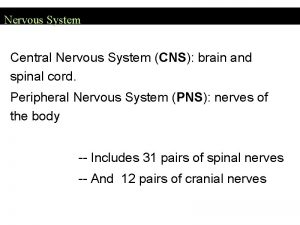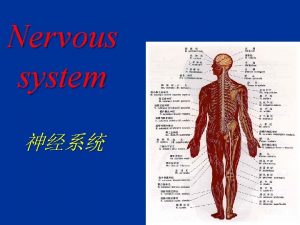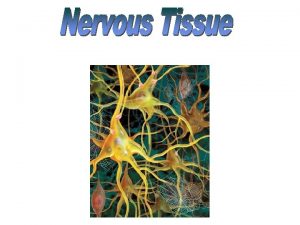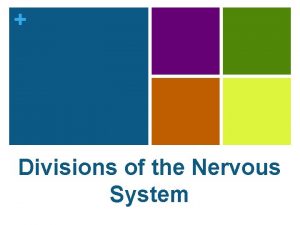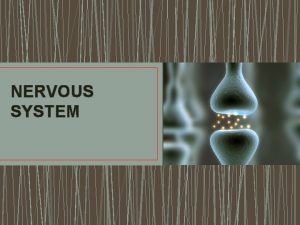Divisions of the Nervous System Central Nervous System








- Slides: 8

- Divisions of the Nervous System • Central Nervous System (CNS)- consists of the brain and spinal cord. • Peripheral Nervous System (PNS)- all of the other nerves.

Central Nervous System (CNS) consists of brain and spinal cord. • 3 main regions of the brain: cerebrum, cerebellum, and brain stem. Cerebrum- largest part of brain. Controls senses, movement, speech, memory, language and learning. Right half controls left side of body and vice versa.

• Cerebellum- “little brain” controls coordination, balance, & posture. • Brain stem- underneath cerebellum and at the top of the spine, controls involuntary actions (breathing, heart rate, digestion, etc). • Spinal cord- tube-like structure of neurons about the width of your thumb, links brain to other nerves

- Divisions of the Nervous System The Brain

Peripheral Nervous System • Consists of sensory neurons and motor neurons. • Involved in voluntary (skeletal muscle) and involuntary (smooth & cardiac muscle) actions. • transmits information between the CNS and the rest of the body

- Divisions of the Nervous System Peripheral Nervous System • The peripheral nervous system consists of a network of nerves that branch out from the central nervous system and connect it to the rest of the body. The peripheral nervous system is involved in both involuntary and voluntary actions.

Reflexes • A response that happens automatically. • Happens rapidly without conscious control. • Reflexes help protect the body. Nervous System Injuries • Concussion- bruising of the brain, happens when you bump your head. • Spinal Cord Injuries- physical injuries can cause axons to be damaged, causing paralysis.

Maintaining Homeostasis The nervous system is vital to sensing changes in the environment, allowing other systems to respond.

